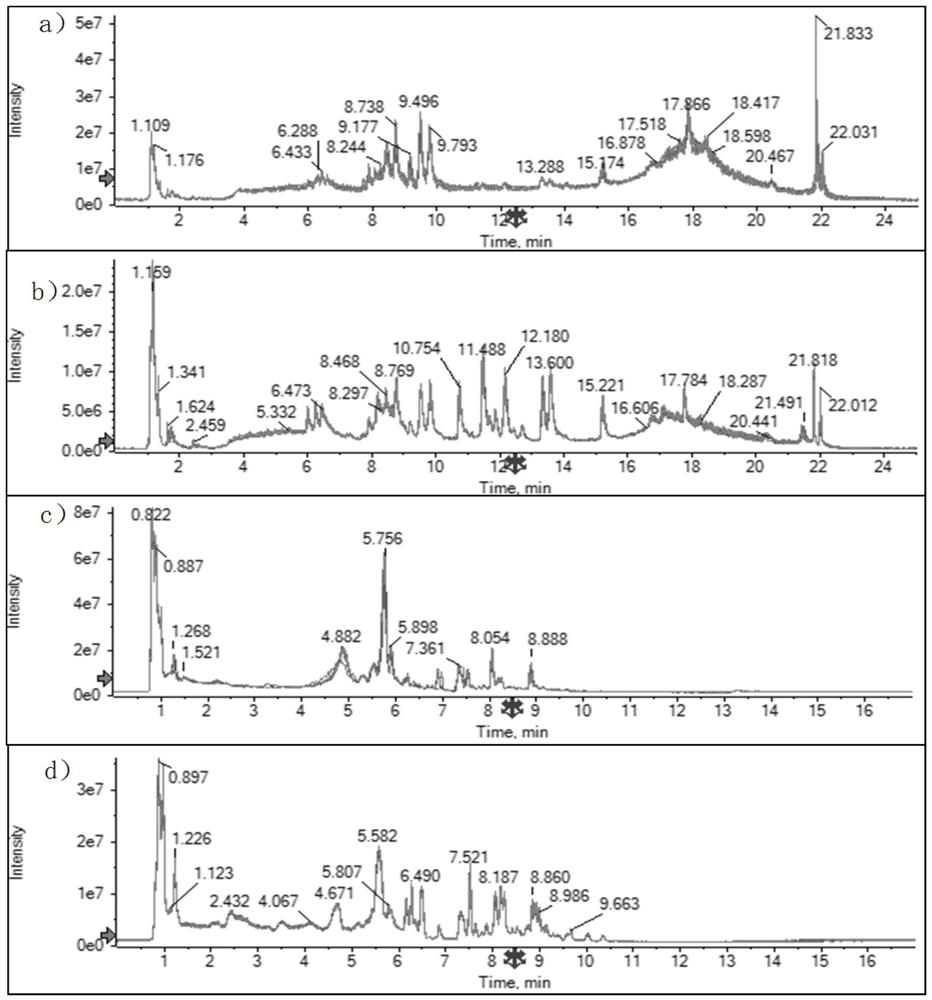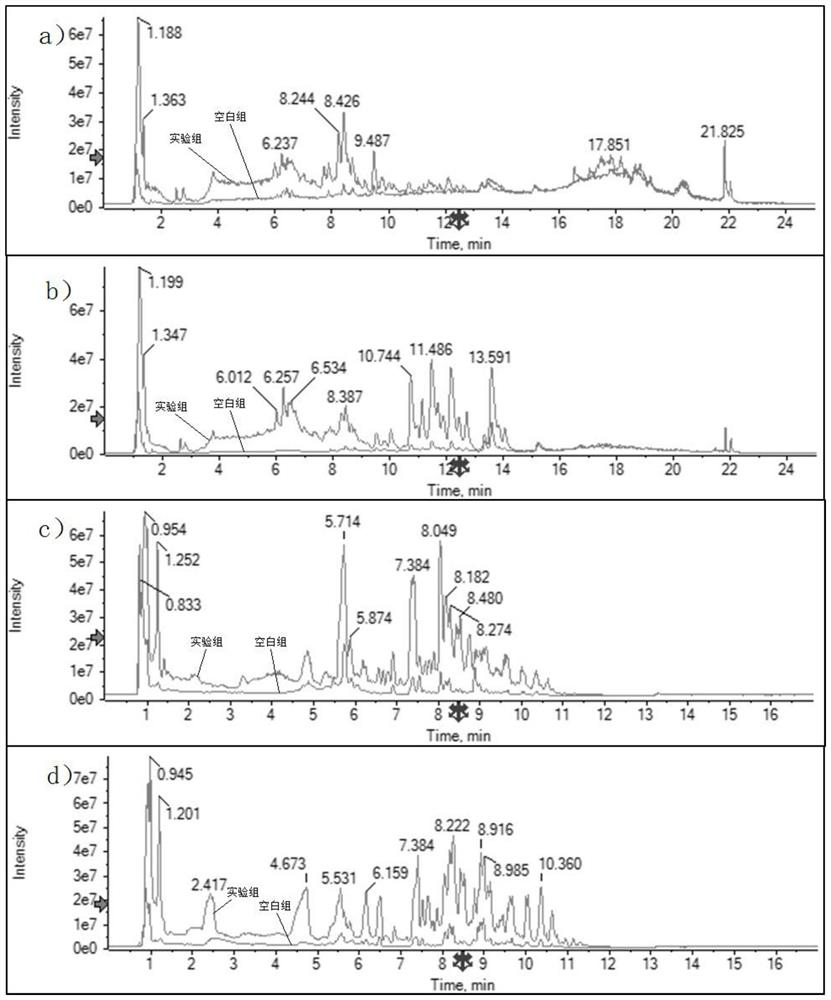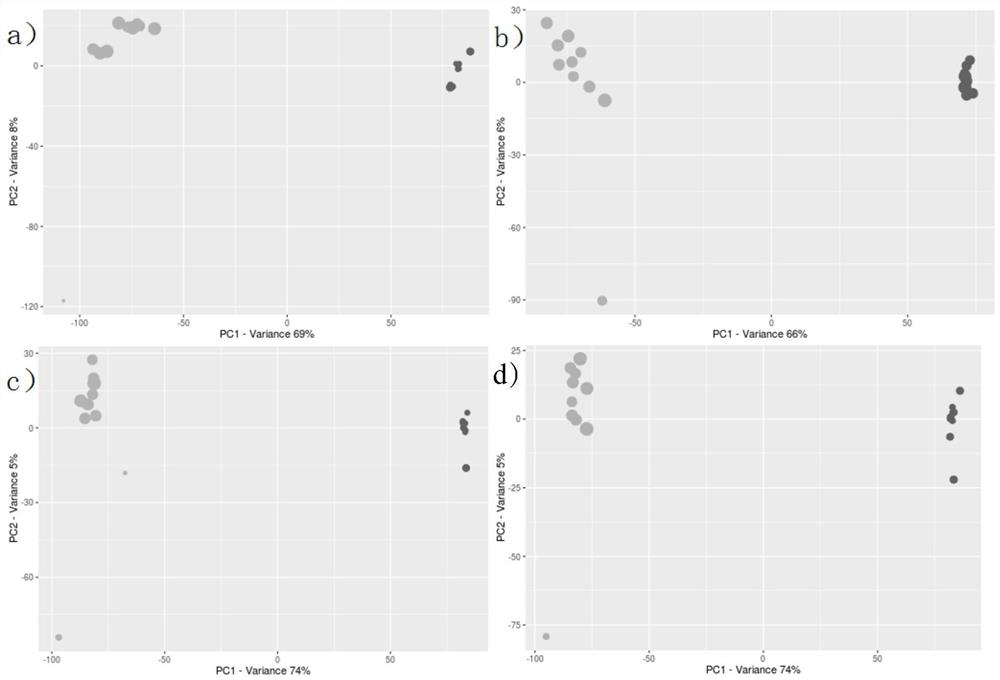A method for constructing a model based on liver metabolomics to study the enhanced immune mechanism of selenized aminopolysaccharides in black sea bream
A metabolomics, amino selenide technology, applied in the field of biomedical analysis, can solve the problems of complex operation, low accuracy, poor systematicness, etc., and achieve the effects of simple operation, high accuracy and low cost
- Summary
- Abstract
- Description
- Claims
- Application Information
AI Technical Summary
Problems solved by technology
Method used
Image
Examples
Embodiment 1
[0040] A method for constructing a model for enhancing the immune mechanism of black sea bream based on the study of selenized amino polysaccharides based on liver metabolomics, the method comprising the following steps:
[0041] 1) Stop feeding the juvenile black sea bream for 1 day, and then select juvenile black sea bream with healthy body, uniform size, and initial body weight of 12.8-13.2 g and randomly divide them into the experimental group and the blank group. The blank group is fed with ordinary feed, In the experimental group, 0.6 mg Se / kg selenized aminopolysaccharide was added to the common feed for 8 weeks. After the end, the juvenile black sea bream was starved for 24 hours, anesthetized with 60 mg / L MS-222, and the liver tissue was taken out. Among them, 10 parallel samples were selected for each of the experimental group and the blank group, and were quickly frozen with liquid nitrogen after weighing, and then stored in an ultra-low temperature freezer at -80°C ...
Embodiment 2
[0050] The difference with Example 1 is that in step 1), the experimental group added 0.5mg Se / kg selenized amino polysaccharide in the common feed, and fed it for 10 weeks; step 2) was to get the above-mentioned 20 spare liver tissues in a centrifuge tube , add 15 times the volume of methanol frozen at -10°C, homogenize at 10,000rpm for 0.5min, centrifuge at 12,000rpm at 4°C for 5min, take the supernatant and dry it with nitrogen at 30°C, and use methanol aqueous solution (methanol and water The volume ratio of the above-mentioned liver tissue samples is 4:1) to prepare the liver tissue samples, and the preparation of the liver tissue samples is completed within 12 minutes; take the supernatants in the preparation of the above-mentioned liver tissue samples and mix them evenly, dry them with nitrogen at 50°C, and wash them with methanol The aqueous solution was redissolved to prepare quality control samples.
Embodiment 3
[0052] The difference with Example 1 is that in step 1), the experimental group added 0.7mg Se / kg selenized amino polysaccharide in the common feed, and fed it for 9 weeks; step 2) was to get the above-mentioned 20 spare liver tissues in a centrifuge tube , add 5 times the volume of methanol frozen at -30°C, homogenize at 14000rpm for 0.5min, then centrifuge at 14000rpm for 3min at 4°C, take the supernatant and dry it with nitrogen at 50°C, and use methanol aqueous solution (methanol and water The volume ratio of the liver tissue sample is 4:1) to prepare the liver tissue sample, and the preparation of the liver tissue sample is completed within 12 minutes; the supernatant in the preparation of the above-mentioned liver tissue samples is mixed evenly, dried with nitrogen at 30°C, and washed with methanol The aqueous solution was redissolved to prepare quality control samples.
[0053]Before preprocessing the analytical data, the quality and validity of the obtained analytical ...
PUM
 Login to View More
Login to View More Abstract
Description
Claims
Application Information
 Login to View More
Login to View More - R&D
- Intellectual Property
- Life Sciences
- Materials
- Tech Scout
- Unparalleled Data Quality
- Higher Quality Content
- 60% Fewer Hallucinations
Browse by: Latest US Patents, China's latest patents, Technical Efficacy Thesaurus, Application Domain, Technology Topic, Popular Technical Reports.
© 2025 PatSnap. All rights reserved.Legal|Privacy policy|Modern Slavery Act Transparency Statement|Sitemap|About US| Contact US: help@patsnap.com



